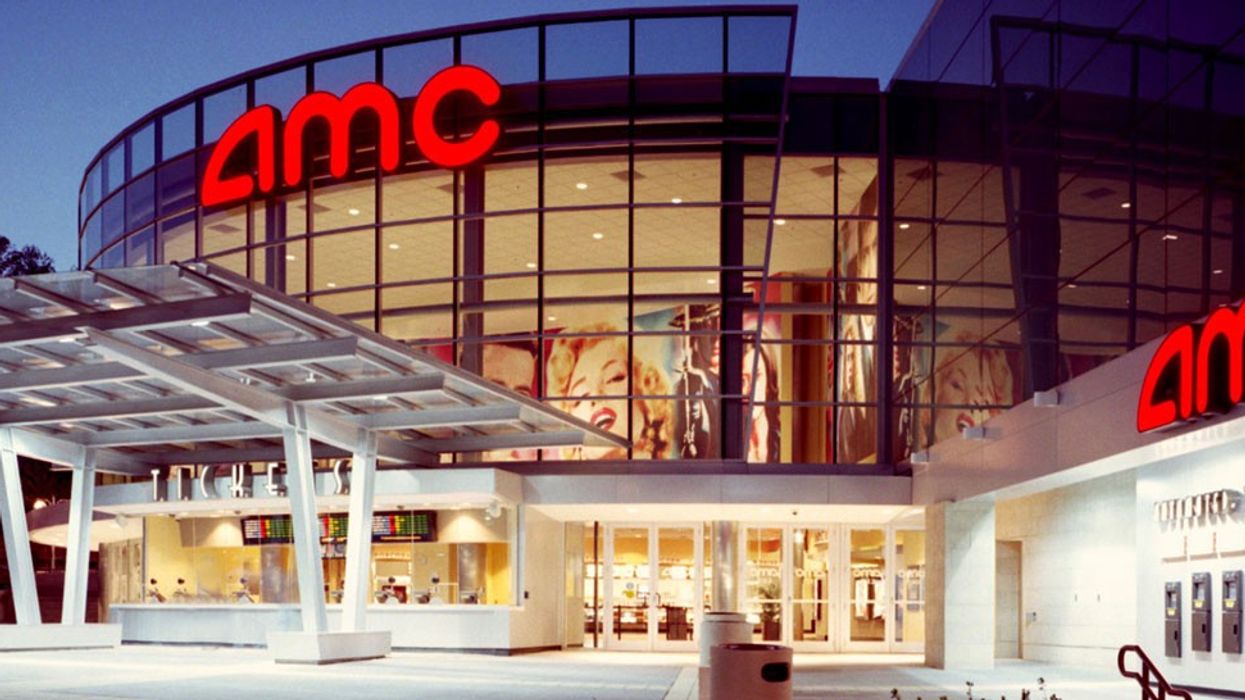Theaters Sue for the Right to Remain Open During a Pandemic
AMC, Cinemark, and Regal say that if churches are reopening, then theaters should be allowed to open as well.

Before this insanity, I would get up every Sunday morning and use my AMC A-list pass to see the first movie showing of the day. I called it "murch" or movie-church. It was my celebration and time to reflect on why I moved to Hollywood.
Well, coronavirus hit, theaters and actual churches shut down, and I took my worshipping indoors. But now, the world is trying to reopen, and while some states have widespread infections worse than others, theaters want to make a comeback.
In New Jersey, theaters are suing for a chance to reopen during COVID-19, based on a precedent set by churches being allowed to open.
Turns out, New Jersey takes murch very seriously.
A complaint being led by the National Association of Theatre Owners of New Jersey stated, "By this Complaint, Plaintiffs challenge Defendants’ unconstitutional and unlawful distinctions in allowing certain places of public assembly to reopen, while requiring movie theatres to remain closed...COVID-19 represents a serious public health risk, and Plaintiffs support fair and reasonable actions by the government to address that risk. However, the government-mandated total closure of movie theatres is neither fair nor reasonable, and is instead a violation of Plaintiffs’ First Amendment rights of freedom of speech and freedom of expression, Equal Protection of the laws, Due Process under the law, and is a Taking of property without just compensation."
The suit is being handled by First Amendment attorneys at Davis Wright Tremaine, a firm that, according to the Hollywood Reporter, represents many in the media.
You can read the full complaint here, but to summarize it, it discusses how New Jersey has now entered Stage 2 of its reopening plan and has allowed places of worship to re-open. However, the state hasn't made a timeline for the commencement of Stage 3, or for the reopening of movie theatres.
Here's a rather poignant part of the complaint, "Defendants have a legal obligation to promulgate orders that treat like entities in a like manner, and not to create arbitrary or irrational distinctions, particularly where First Amendment rights are at stake," states the complaint. "Although Defendants have issued orders allowing other public assemblies such as religious services and ceremonies to open, they have withheld approval for movie theatres, which are similarly situated, if not less of a risk, from a public health perspective. Representatives of Plaintiffs met with representatives of Defendants, and the representatives of Plaintiffs shared detailed safety protocols that would be implemented for the reopening of movie theatres in the State that Plaintiffs are ready, willing, and able to implement."
I'm not a lawyer, so I have no idea if there is legal grounding here, but it's an interesting development. Obviously this lawsuit only represents New Jersey, but if it's successful, it could set a precedent that could be used all over America.
This kind of pressure comes off the back of the United States government ending the coronavirus unemployment at the end of July; people are worried that if they cannot go back to work, they'll go bankrupt. However, the average citizen has their own set of worries about reopening due to social distancing concerns, so I also wonder if anyone will really go back to theaters while cases are on the rise all over.
This entire situation is a mess, and with studios unsure if they want to put movies in theaters and risk them bombing, there really are a ton of questions and ideas up in the air moving forward.
What are your thoughts? Let us know in the comments.

 Richard Gere and Uma Thurman in 'Oh, Canada' via Kino Lorber
Richard Gere and Uma Thurman in 'Oh, Canada' via Kino Lorber  Uma Thurman in 'Oh, Canada'via Kino Lorber
Uma Thurman in 'Oh, Canada'via Kino Lorber 









